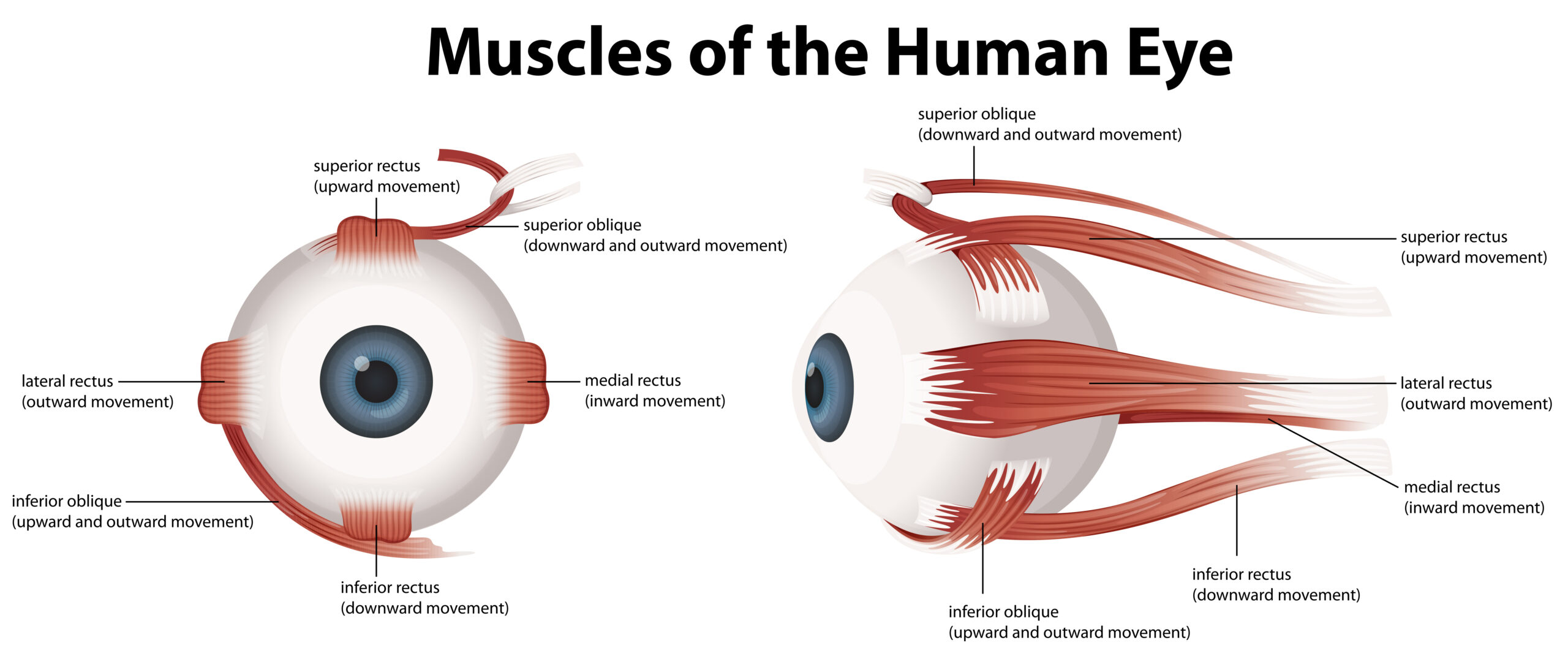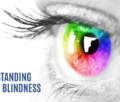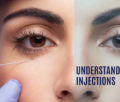Table of Contents
What is Red Eyes?
Bloodshot eyes or red eyes occur when blood vessels on the surface of the eye congested or bleed.
It is not normal for eyes to be red. Bloodshot eyes are usually painless.
The common causes are not sight or life threatening, however some causes of red eye can point to a serious medical issue.
Red Eyes Causes
Conjunctivitis or Pink Eye :
Conjunctivitis is a common eye problem, and refers to inflammation of the conjunctiva. The conjunctiva is a clear lining of the white of the eye (the sclera) which loops around to cover the back of the eyelids. As the conjunctiva is very thin and exposed to the environment, it can become inflamed or infected easily. The irritation of the surface blood vessels causing them to swell up. This inflammation makes the eye look red or pink, instead of white.
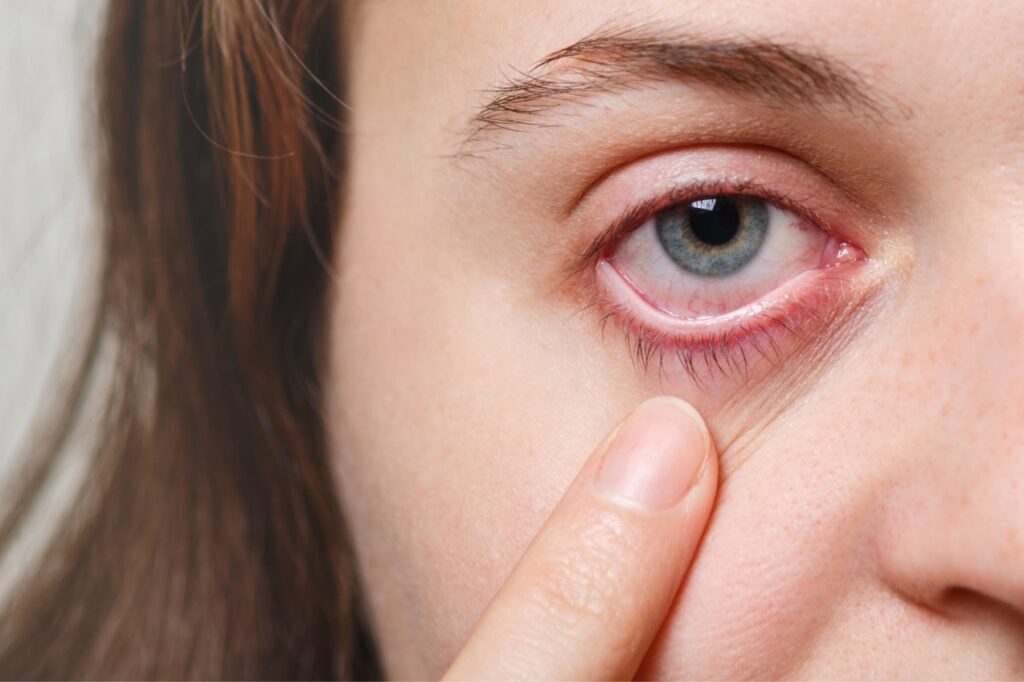
Conjunctivitis or Pink Eye can be caused by infection, inflammation or allergy.
“Pink eye” refers to infective conjunctivitis, usually by either a virus (causing up to 80% of all cases) or bacteria. Signs include redness and inflammation of the white part around your eyes, making them look “pink.” Viral conjunctivitis is highly contagious due to its transmission through direct contact. You can easily get infected when you come in close proximity with an infected child or adult.
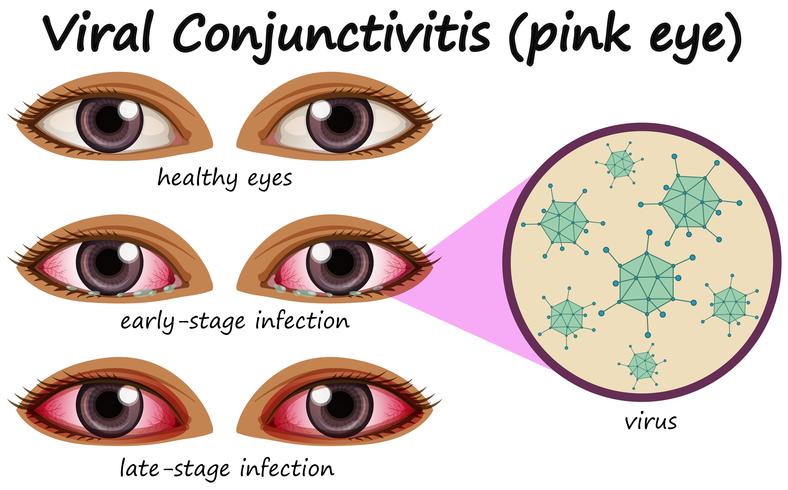
Allergic conjunctivitis can be due to allergens such as pollen, or irritants such as dust.
Wearing contact lenses for too long and not properly cleaning them may also lead to conjunctivitis due to irritation or reduced oxygen supply. Conjunctivitis through contact lenses is a common non-contagious infection of the eyes caused by irritation. It can cause reduced vision in severe cases.
Symptoms of conjunctivitis include:
- Eye redness
- Eye watering
- Discharge – could be watery, mucus or pus
- Itchy eyes
- Light sensitivity
- Poor vision
- Gritty feeling in one or both eyes
Treatment depending on the cause of infection. Viral conjunctivitis resolves over days to weeks, and it is important to practice proper hand hygiene and social distancing to reduce transmission and infection of other individuals. Bacterial conjunctivitis requires antibiotic eye drops. Allergic conjunctivitis is treated with anti-allergy drops and tablets, as well as avoiding the allergens that trigger the response.
Corneal Ulcer:
A corneal ulcer is an open sore on the cornea that can lead to blindness if left untreated.
It is usually caused by a bacterial infection and this can occur following eye trauma, contact lens wear or following eye surgery. Eyelid disorders and the cold sore virus (herpes simplex virus) can also cause corneal ulcers. Other causes of corneal ulcers include parasites, fungi, facial palsy (“Bell’s palsy”) and severe dry eyes.
Symptoms of Corneal Ulcers:
- red eye
- reduced vision
- pain in the eye
- sensitivity to light
- mild to severe eye discharge
- a white spot on the cornea
- soreness of the eye
Prescription medications and close follow up are required for the treatment of a corneal ulcer.
Dry Eyes:
A person who has reduced tear production, or rapid tear evaporation, can experience dry eyes. This condition, known as Dry Eye Syndrome (DES), is a very common eye problem around the world.
Dry eyes can be caused by many factors, including work-related stress or reduced tear production, which leads to insufficient moisture for healthy functioning. People suffering from this chronic ailment may feel constantly uncomfortable with eye redness, stinging sensation, burning pain behind the eyelid, and (somewhat surprisingly) excessive tearing.
Dry eye can be caused by an underlying medical condition or just as a result of reduced gland function in older age. It is difficult to determine the cause without visiting your doctor and getting tested for dry eyes.
Symptoms of dry eye syndrome include:
- stinging or burning eyes
- foreign body sensation
- pain and redness in the eye
- excessive tearing
- blurry vision
- eye fatigue
- stringy eye discharge
- increased discomfort after watching television or reading (due to reduced blinking during these activities)

For mild cases, artificial tears might help supply some lubrication. More severe conditions require prescription medications, and sometimes surgery.
Subconjunctival Haemorrhage:
The conjunctiva is the thin membrane that covers and protects your eye. Many blood vessels in this area can burst and cause a subconjunctival haemorrhage when their lining is broken. There will be a small amount of bleeding under the outer layer of membranes when it does happen. This causes a small or large bright red patch to appear.
It is common for people not to know why they suddenly have a subconjunctival haemorrhage. It often occurs due to minor injury or trauma, such as rubbing the eye too hard. Straining also has been reported in some cases and can be caused by coughing, sneezing or constipation. It is more common in patients who are on aspirin or blood thinning medications. However, many times doctors are unable to determine what triggered this type of bleeding under the eyelid even after investigation.
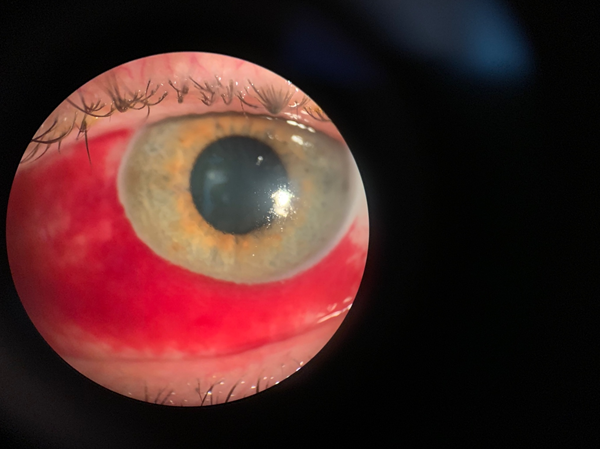
Symptoms of Subconjunctival Haemorrhage:
- When bleeding first occurs, you may experience a full feeling in the eyes.
- mild eye irritation
- Red patch on eyes
Subconjunctival haemorrhage resolves on its own over a few weeks. The blood can spread initially and become larger in the first 24 hours. The colour changes to yellow before disappearing completely. No medications are required.
Glaucoma
Glaucoma is a condition that causes damage to the optic nerve due to pressure build-up in the eye. The front part of your eyes contains clear fluid, called aqueous humour. This fluid nourishes your eye. There are many causes of glaucoma, however a sudden build-up of pressure can occur due to “acute angle closure”, when fluid can no longer drain out of the eye.
The symptoms of acute glaucoma are:
- eye redness
- eye pain, usually severe
- seeing halo-like glows around lights
- blurred vision
- nausea and possibly vomiting
Allergic:
Allergic reactions can occur when the body’s natural immune device receives too excited or reacts to an innocent stimulus too strongly.
Anything can activate an allergy, but the maximum common allergens are dust, pollen, pet dander, and detergent.
Allergies can cause the eyes to end up crimson and swollen. The most common cause of eye allergy symptoms is the allergen pollen. Pollen is a small, airborne seed that comes from plants. When pollen comes in contact with your eyes, they can cause an allergic reaction.
Symptoms of Allergic eye disease
– red eyes
– irritation
– itching (very common in allergy)
– a burning sensation
– increased tearing
Blepharitis :
Blepharitis is a common condition that affects the eyelid margins. The eyelids may appear red and swollen, and the eyes may feel dry.
Blepharitis is an inflammation of the eyelid tissues. If left untreated, blepharitis can cause inflammation of the ocular surface.
Blepharitis can appear when you have excessive quantities of normal bacteria on your eyelids. The condition may expand if oil glands for your eyelids grow to be clogged. A Demodex mite infestation also can cause blepharitis in some patients.
Symptoms of blepharitis are :
– Feeling like something is in your eye
– Crusty material on eyelid margins
– Stye (chalazion)
– Dry eye
– Irritated eye
Uveitis :
Uveitis is inflammation of tissues known as the uvea. The uvea is a layer between the white of your eye and the retina, and also includes the coloured part of the eye (iris).
Inflammation because of uveitis can lead to eye redness.
Symptoms of Uveitis are :
– Red eye
– Blurry vision
– Ocular pain
– Light sensitivity
Scleritis :
Scleritis is a severe eye disease with inflammation of the white of your eye, which is known as the sclera. If scleritis takes place, the white part of your eye can grow to be violet in colour, and swollen.
Symptoms of Scleritis are :
– Severe eye pain
– Increased tearing
– Eye tenderness
– Blurred vision
Photokeratitis :
Photokeratitis is a painful condition that happens when your eyes are uncovered to ultraviolet (UV) rays. You could consider photokeratitis as a sunburn that affects the corneas of your eyes.
Ultraviolet rays clearly come from the solar and are also artificially produced in tanning beds. You can get photokeratitis by spending time inside the solar or in a tanning mattress without solar protection.
Symptoms of Photokeratitis are :
– Watery eyes
– Blurry vision
– Light sensitivity
– Pain or redness in the eyes
– Swelling
Signs and symptoms normally solve within six to forty eight hours, though they cab be more intense in case you are uncovered to UV rays for an extended time period.
Other causes of red eyes:
Swimming :
Many people develop bloodshot eyes after spending some time in a pool. Redness occurs whilst chlorine utilised in swimming pools causes the eyes to end up irritated. As with other reasons for bloodshot eyes, this leads blood vessels close to the floor of the attention emerging as enlarged and dilated.
Swimming with swim goggles can help reduce the amount of bloodshot eyes you get from swimming. The goggles help to block out the light and protect your eyes from the chlorine and salt in the pool.
Smoking:
Smoking cigarettes releases a number of harmful chemicals which can aggravate the sensitive tissues in the eyes. For example, formaldehyde, ammonia, and hydrogen sulfide can lead to eye irritation and bloodshot eyes.
Alcohol:
Ingesting alcohol can motivate some human beings to broaden eye redness. This is because alcohol can motivate vasodilation, that’s whilst your blood vessels widen.
When vasodilation occurs, the blood vessels in the white part of the eye enlarge. This can be due to a number of factors, including dehydration and alcohol consumption. These factors can make the eyes look red and tired.
Pregnancy :
Being pregnant causes massive changes to several hormones within the frame, those changes can cause the body to supply fewer tears, so your eyes may sense anger or gritty. In addition, they will seem pink.
COVID and Red Eyes :
Studies show that eye signs and symptoms arise in approximately 5% of COVID-19 instances. When eye symptoms do arise, they frequently seem before other systemic signs and symptoms, together with fever and headaches
The most common eye symptoms related to COVID-19 consist of bloodshot eyes, sensitivity to mild (photophobia), soreness, and itchiness.
Treatment of Red eyes
The treatment for red eyes depends upon its cause and seriousness. Sometimes just giving your eyes rest or gently massaging over the eyelids can help. Washing your eyes and eye drops can also be used to treat red eyes. Your doctor may also prescribe you some eye drops or ointment.
Prevention of Red eyes
Follow these tips to prevent red eyes:
- You should wash your hands if you’ve come in contact with someone who has an eye infection.
- Always remember to remove eye-makeup before going to bed.
- Avoid wearing contact lenses for too long, generally not more than 12 hours per day.
- Clean your contact lenses regularly.
- Stay away from daily activities that put pressure on your eyes.
- Avoid substances that can cause allergies.
What are the complications of eye redness?
Most causes of eye redness won’t bring about serious complications.
However, if you have a condition that is making your eye red and also affecting your vision, it would be recommended to have this assessed by an eye doctor.
Examples of complications related to red eyes including vision loss, prolonged eye inflammation and high eye pressure.
When should you contact a doctor?
If you experience red eyes, the most likely cause is irritation from a substance in the environment. You should consult a doctor if:
– your signs and symptoms are persistent longer than 1 week
– you experience changes on your vision
– you experience severe pain in your eye or headache
– you become sensitive to light
– you have purulent discharge from one or each of your eyes
– you begin seeing white rings, or halos, around lights
– you experience nausea and vomiting
Conclusion
Red eyes are often harmless and usually go away on their own. However, if you have constant eye redness (Red eye), associated pain, discharge or reduced vision, it is best to consult an eye doctor. An eye doctor will help detect its cause and provide appropriate treatment before it becomes serious.
As an ophthalmologist in Canberra, Dr Parth Shah is committed to providing excellent eye care service for his patients with modern research and the latest technology.


